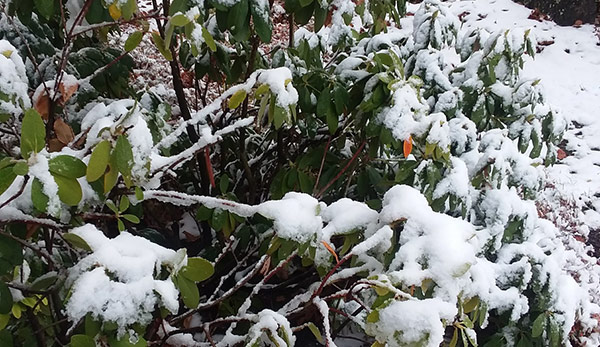Virginia Green Grow Beyond Blog
Respect the Lawn
Our Blogs
Tree Care Guide: Magnolia Trees
Don’t Let Aphids Wreck Your Landscape
As the weather warms up and your landscape starts to thrive, so do the pests – and few are as sneaky and stubborn as aphids. These tiny, sap-sucking insects can cause big problems for trees and shrubs across Virginia, especially as we head into late spring and summer. Here's what you need to know about identifying and controlling aphids before they take over your yard.
What is Fireblight Disease?
Fireblight is a destructive, highly infectious, widespread disease caused by the bacterium (Erwinia amylovora.) It is found on apples, pears and other members of the rose family which includes trees and shrubs in orchards, nurseries and landscape plantings. It is very difficult to control. Virginia Green recommends the cultural practices below.
Protecting Your Garden from Cold Weather
Cold weather can be a silent enemy to your garden, often causing unseen damage to plants, trees, and shrubs. Many gardeners overlook this issue, only to find signs of harm in the spring. Wilting leaves and a sparse canopy might surprise you in an otherwise lush season, and you may notice defoliation weeks after a brief cold spell. The root cause? Water management within the plant.
Snow on Your Trees and Shrubs
Should you worry about heavy snow on trees and shrubs?
After a heavy snowfall, have you ever thought about removing heavy snow from the branches of your trees and shrubs? There are two thoughts about this question. We will discuss both of them here.

What Are These Small Green Worms In My Trees?
Lawn Programs
Premium Lawn Care Service
Our most popular lawn care service is Premium Lawn Care. It includes seven essential treatments per year to keep your lawn green, vibrant, and weed-free.
7 Applications per Year
- Pre-emergent crabgrass control
- Broadleaf weed control
- Nutsedge control
- Starter lawn fertilizer for seedling germination and development
- Liquid and granular lawn fertilizer applications
Estate Lawn Care Service
For homeowners seeking exceptional lawn care services, our Estate Lawn Care Service offers the ultimate in care and customization. This comprehensive program includes advanced treatments.
11 Applications per Year
- Pre-emergent crabgrass control
- Broadleaf weed control
- 2 applications of nutsedge control
- Starter lawn fertilizer for seedling germination and development
- Liquid and granular lawn fertilizer applications
- 4 applications of lawn disease prevention fungicides
- Lime Application
- Grub Control
- Annual soil samplings and results


